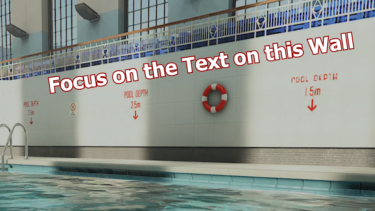Why PSVR 2 is more likely to make you sick than other VR headsets

March 21, 2023:
Brad Lynch used an instrument to measure the luminance of the display at different brightness settings.
With these numbers, users can compare how much brightness is sacrificed at lower settings.
- 0% brightness: 60 nits
- 25% brightness: 110 nits
- 100% brightness: 265 nits
For comparison: The Meta Quest 2's display has a luminance of around 100 nits.
Brad Lynch explains in a video why PSVR 2 may cause more nausea for some people and how to mitigate the problem.
The Youtuber and hardware analyst has been using virtual reality for many years with various devices and wondered why the Playstation VR 2 made him uneasy.
Lynch suspected this was due to the PSVR 2's high display persistence, and backed up his theory with a high-speed camera and a week-long experiment.
Persistence is the amount of time a VR display is lit during a single frame. The persistence should be as short as possible, otherwise the eye will might perceive motion blur.
Using a technique called low persistence, VR displays produce a sharp image during head movements without having to increase the refresh rate of the VR display. This technique was invented over a decade ago and was one of the most important innovations in the VR industry at the time.
PSVR 2 has higher persistence than the competition
Lynch filmed the displays of several VR headsets (HTC Vive & Pro, Meta Quest 2 & Pro, Valve Index, and Playstation VR 2) and compared the amount of persistence.
He found that the PSVR 2's display had longer persistence than the others, even at the lowest hardware brightness levels. Lynch thinks this may be the cause of some of his nausea.
PSVR 2 even at 0% brightness seems to be the highest persistence display in any mass-consumer VR HMD
The second highest in this list would be Quest Pro due to having to sequence the individual MiniLED chips. This is probably why Meta is afraid to test out 120hz 🥴 pic.twitter.com/bIRyXSUCEG
— Brad Lynch (@SadlyItsBradley) March 4, 2023
Lynch writes in his Youtube video: "The amount of light emission each pixel gives during the 'on' timings are the same. However, less '0ff' timings make you feel it’s brighter, but at the cost of motion clarity."
Reprojection can also cause motion sickness
Lynch recommends that people suffering from nausea set the brightness as low as possible (0 to 25 percent) in the headset's hardware settings.
"This improved my own gameplay immensely and allowed for longer sessions with the device," Lynch writes. He also says that the lower brightness makes the so-called mura effect, an uneven screen uniformity that can be quite pronounced on the PSVR 2, less noticeable.
To counteract the darker image, some studios (the makers of "Kayak VR: Mirage" and "Song in the Smoke") have implemented a slider in the game menus to increase the brightness of the games on the software side.
Another PSVR2 game, Kayak VR, has a software brightness slider! Great for weirdos like me who enjoy running the hardware at 25% or lower
I feel like I will showcase every game that has settings like this on the system. It really helps to have options from developers who care! pic.twitter.com/1mM2OWeXN3
— Brad Lynch (@SadlyItsBradley) March 8, 2023
However, the motion blur that occurs with PSVR 2 can have a second cause. I'm talking about the VR headset's reprojection technology, which artificially doubles the frame rate from 60 to 120 in VR games like Horizon Call of the Mountain.
Only very demanding PSVR 2 games use this technique. Some titles such as The Light Brigade were optimized and subsequently switched from artificial 120 to native 90 frames per second to eliminate the motion blur.
We can only hope that Sony will improve its reprojection via a software update or that studios will optimize to native 90 or 120 hertz in the future.
As far as the persistence is concerned, it's not clear whether Sony wants to fix the issue at hand. I asked Lynch for his opinion. This is what he said: "The best they could do is increase the light emission during the 'on' period to compensate, but I have a feeling they don't want to touch that because it could sacrifice the lifetime of the panels. So, I think it's a trade-off they won't touch. The option for users to go lower for motion clarity is there."
Note: Links to online stores in articles can be so-called affiliate links. If you buy through this link, MIXED receives a commission from the provider. For you the price does not change.